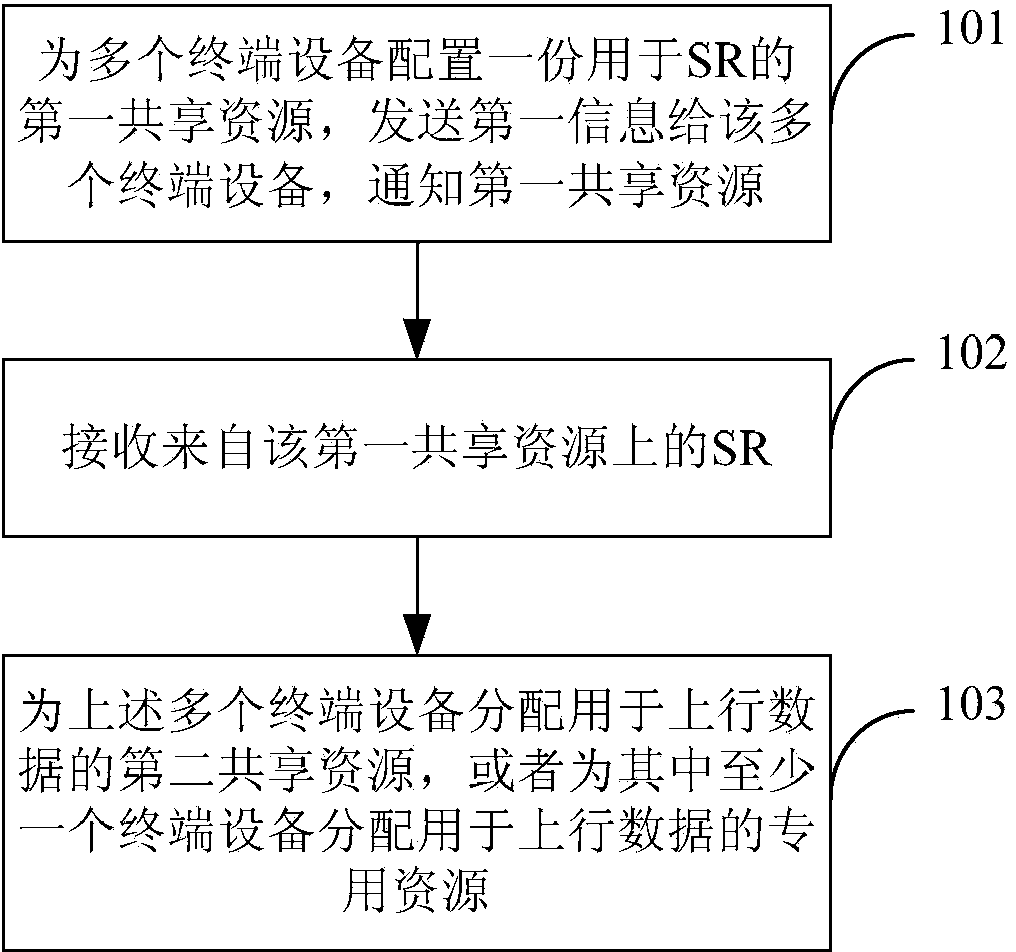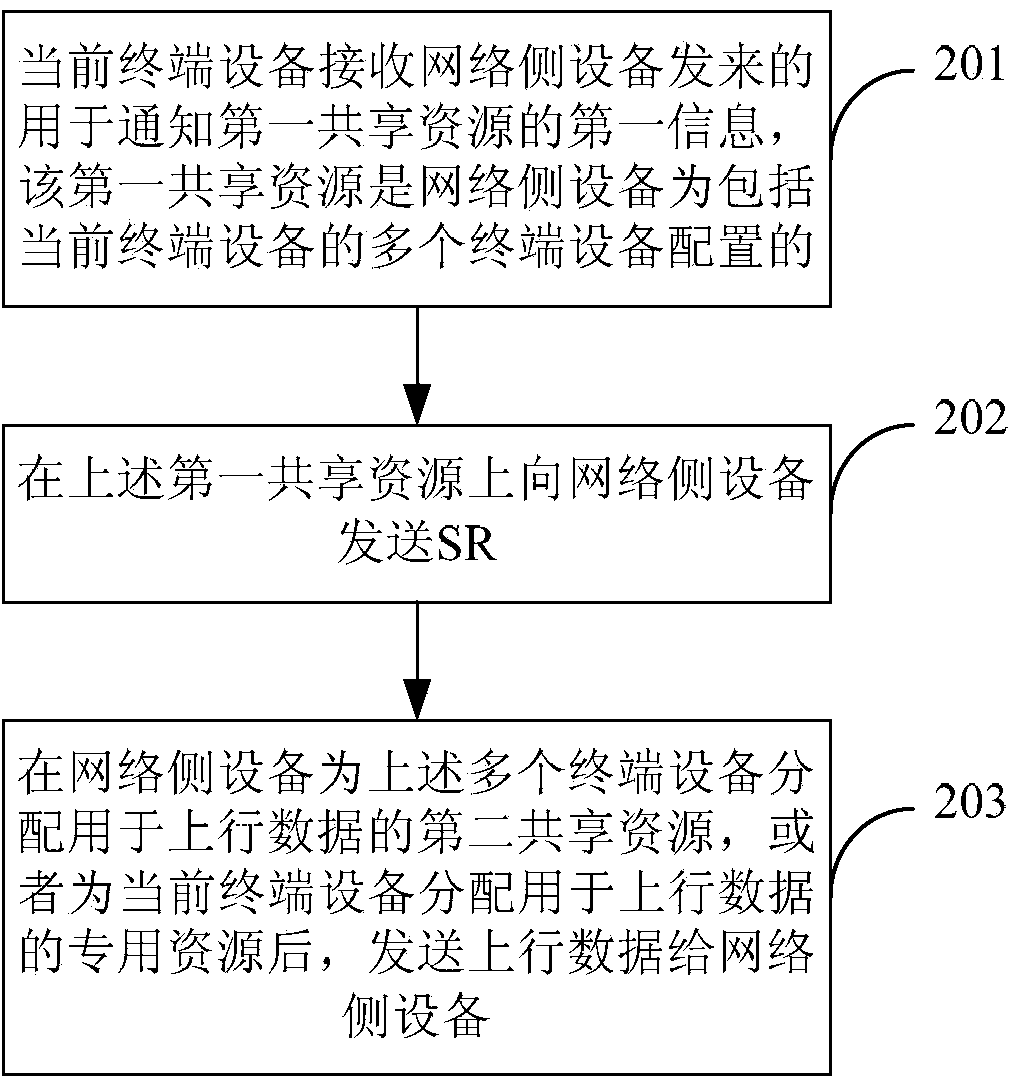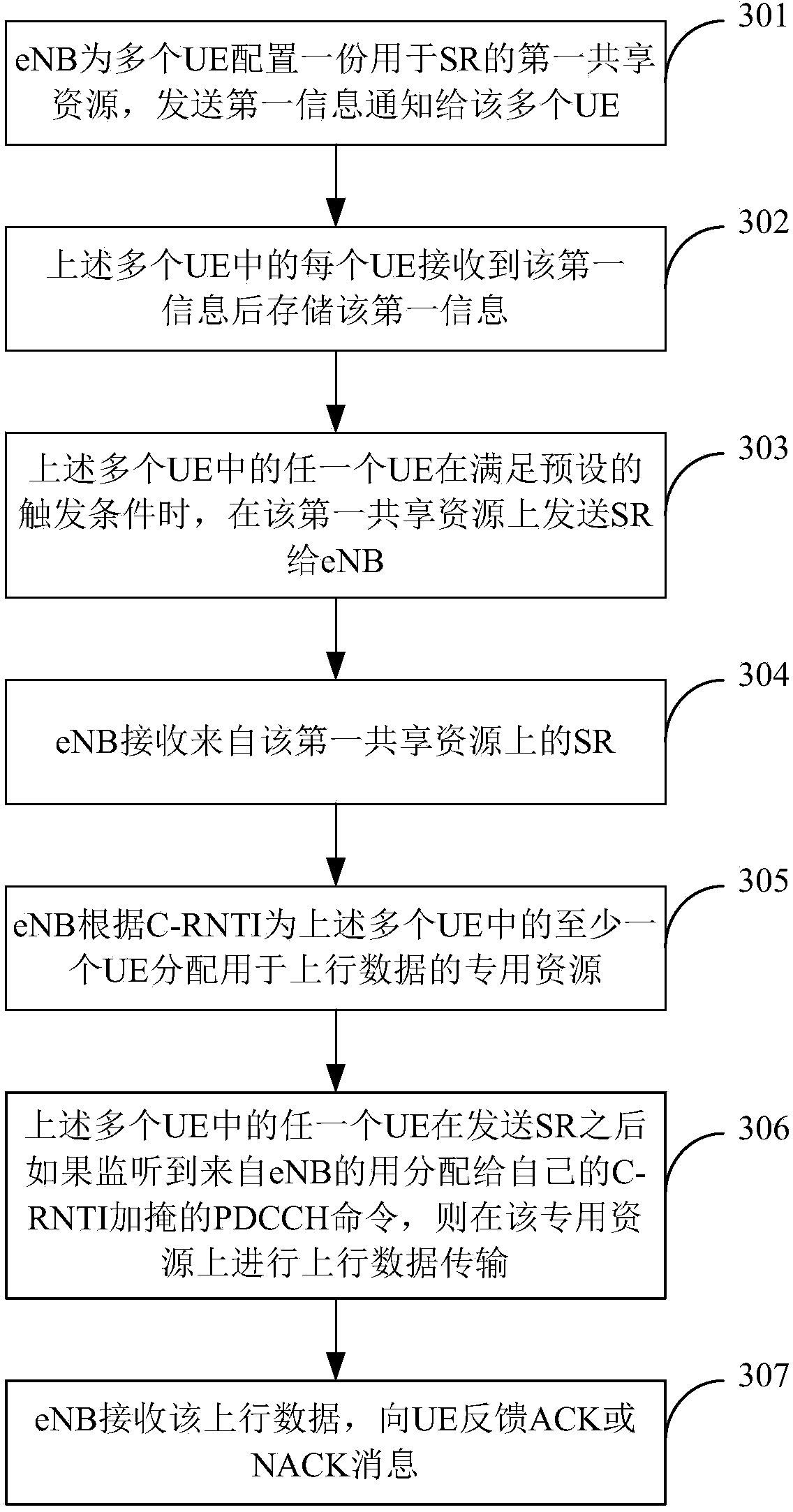Schedule requesting method and device
A technology for scheduling requests and terminal equipment, applied in the field of communication, can solve the problems of waste of CB resources and low utilization of CB resources, and achieve the effects of improving the utilization rate, overcoming the waste of CB resources and low utilization rate, and avoiding the waste of uplink data resources.
- Summary
- Abstract
- Description
- Claims
- Application Information
AI Technical Summary
Problems solved by technology
Method used
Image
Examples
Embodiment 1
[0031] see figure 1 , this embodiment provides a method for scheduling requests, including:
[0032] 101: Configure a first shared resource for multiple terminal devices, where the first shared resource is used by the terminal device to send an SR, and send first information to the multiple terminal devices, where the first information is used to notify the terminal device of the first Share resource;
[0033] 102: Receive an SR from the first shared resource;
[0034] 103: Allocate a second shared resource for uplink data to the multiple terminal devices, or allocate a dedicated resource for uplink data to at least one terminal device among the multiple terminal devices.
[0035] The above method is mainly applied to a device for allocating scheduling request resources and uplink data resources to terminal equipment, usually a network side equipment, such as eNB in LTE, Relay (relay station), UMTS (Universal Mobile Telecommunications System, universal mobile communication...
Embodiment 2
[0038] see figure 2 , this embodiment provides a method for scheduling requests, including:
[0039] 201: The current terminal device receives the first information sent by the network side device, the first information is used to notify the first shared resource, the first shared resource is used for the terminal device to send SR, and the network side device configures for multiple terminal devices , and the multiple terminal devices include the current terminal device;
[0040] 202: Send an SR to the network side device on the first shared resource;
[0041] 203: After the network side device allocates a second shared resource for uplink data to the above-mentioned multiple terminal devices, or allocates a dedicated resource for uplink data to the current terminal device, send an uplink resource on the second shared resource or dedicated resource. data to the network side device.
[0042] The foregoing terminal device is a device on the user side, including but not limi...
Embodiment 3
[0046] see image 3 , this embodiment provides a scheduling request method, which is applied to the scenario where the eNB neither assigns an identifier to the shared resource used for the scheduling request nor assigns an index number to the UE, specifically including:
[0047]301: The eNB configures a first shared resource for scheduling requests for multiple UEs, and sends first information to the multiple UEs, where the first information is used to notify the UEs of the first shared resource.
[0048] Wherein, the eNB may determine according to at least one of factors such as QoS (Quality of Service) requirements of services established by each UE, service characteristics, UE location or channel quality, quantity of SR resources, and eNB strategy. Which UEs share an SR resource. The services established by the UE include but are not limited to: WWW (World Wide Web, World Wide Web) services, FTP (File Transfer Protocol, file transfer protocol) services, SMS (Short Messagin...
PUM
 Login to View More
Login to View More Abstract
Description
Claims
Application Information
 Login to View More
Login to View More - R&D
- Intellectual Property
- Life Sciences
- Materials
- Tech Scout
- Unparalleled Data Quality
- Higher Quality Content
- 60% Fewer Hallucinations
Browse by: Latest US Patents, China's latest patents, Technical Efficacy Thesaurus, Application Domain, Technology Topic, Popular Technical Reports.
© 2025 PatSnap. All rights reserved.Legal|Privacy policy|Modern Slavery Act Transparency Statement|Sitemap|About US| Contact US: help@patsnap.com



